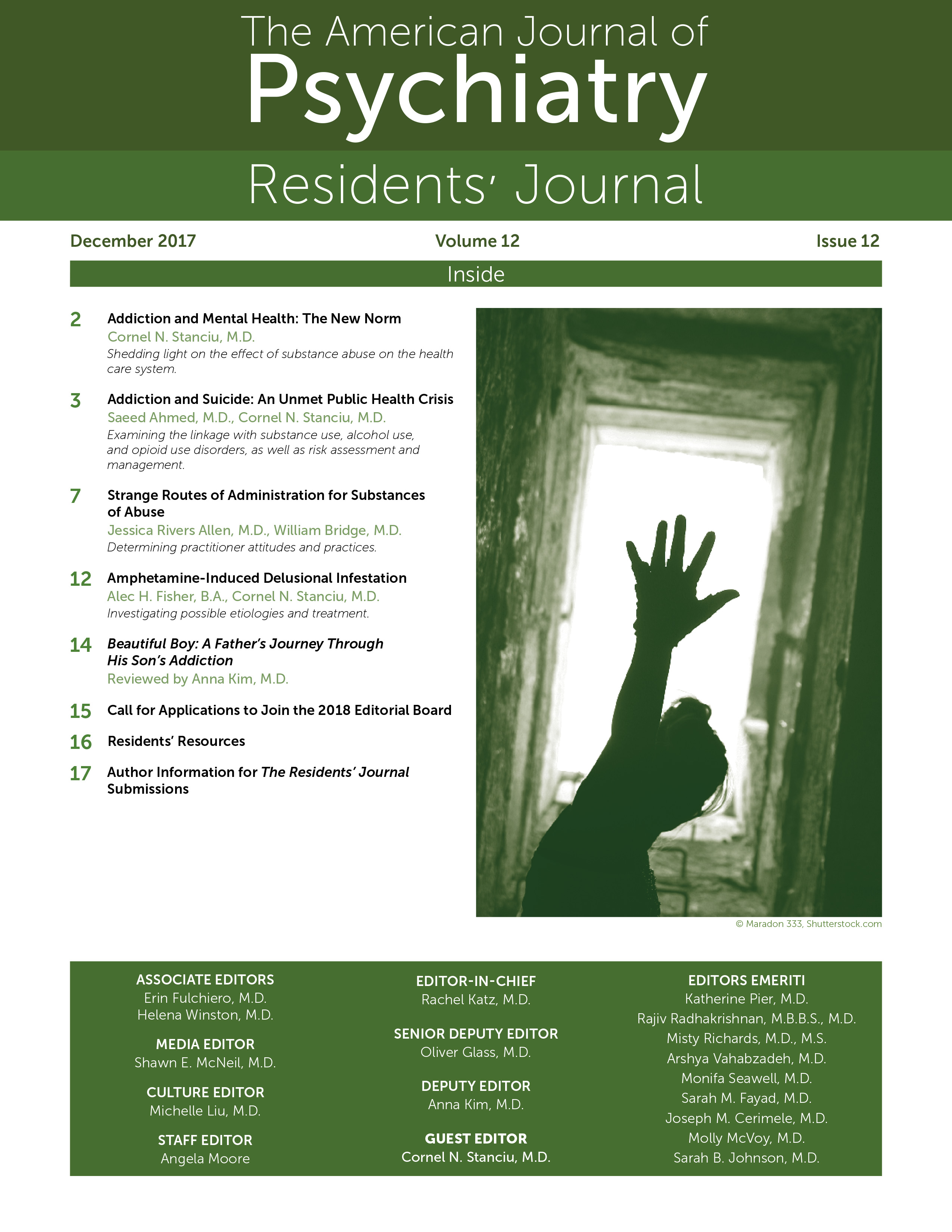Addiction and Mental Health: The New Norm
As a current addiction psychiatry fellow and editorial board member for several addiction-focused journals, I am thrilled to have the opportunity to serve as this month's Guest Editor for the American Journal of Psychiatry Residents' Journal. The aim of this special issue is to shine light on the impact of substance abuse on our health care system. As we have seen throughout training, substance use disorders are highly prevalent and morbid conditions that result in significant social, financial, and human costs. Their prevalence is highest in clinical populations, especially among those with mental illnesses. It is estimated that 25% of the U.S. hospital beds are occupied by individuals with active substance use disorders (1). Ongoing use of substances and lack of properly addressing behaviors that lead to substance abuse impede upon our ability to treat substance use disorders from psychiatric and medical standpoints.
By 2020, substance use disorders are expected to surpass all physical diseases as the major cause of disability (2). Tobacco use is the current number-one worldwide cause of preventable death (3), with many of our patients with mental health conditions being tobacco users. To make matters worse, we as physicians tend to avoid implementing pharmacotherapies for tobacco use and alcohol use disorder, despite strong supportive evidence of the efficacy of such therapies. Looking at the broader picture, for the first time in history the average life expectancy in the United States is decreasing (4, 5), and the conditions responsible for this epidemic of earlier deaths are directly or indirectly related to addiction (for example, chronic obstructive pulmonary disease, lung cancer, hepatitis C, cirrhosis, and fatal overdoses) (4, 5). It is imperative for us and our health care system to start addressing addiction as a top priority. Early intervention following first identification of substance use targets such disorders at a less advanced phase and hence prevents progression. A report published in 2009 showed a significant cost-benefit ratio for early detection and treatment interventions (6). These reduced costs relate to health care, the adult and juvenile criminal justice systems, education, and work productivity (6).
To date, significant emphasis has been placed on the need for more physicians trained in substance abuse to alleviate the treatment gap and increase system capacity (7). There is also an effort to increase the capacity of general mental health care providers to identify and treat high-risk individuals earlier, before referring them for specialty health care (7). This would reduce patients' health risks associated with substance use much sooner while at the same time reducing the burden placed on more costly health care specialties (7). It is in this latter role that trainees and general mental health providers can best have an impact on the care of patients with substance use disorders.
1. : Development of a substance abuse consultation and referral service in an academic medical center: challenges, achievements and dissemination. J Clin Psychol Med Settings 2009; 16:77 Crossref, Google Scholar
2.
3.
4. : Rising morbidity and mortality in midlife among white non-Hispanic Americans in the 21st century. PNAS 2015; 112(49):15078–15083 Crossref, Google Scholar
5. : Mortality in the United States, 2015, National Center for Health Statistics Data Brief. Atlanta, Centers for Disease Control and Prevention, 2016. https://www.cdc.gov/nchs/products/databriefs.htm Google Scholar
6.
7.



